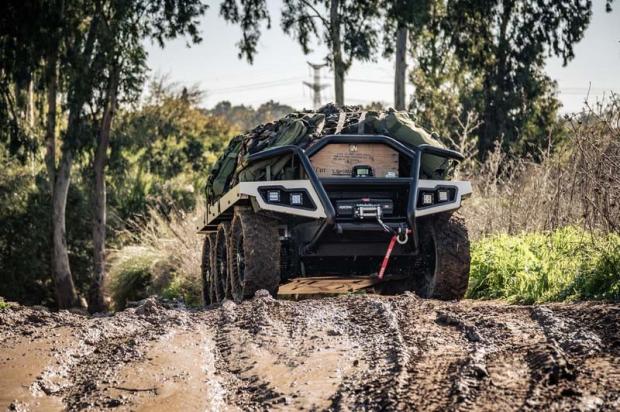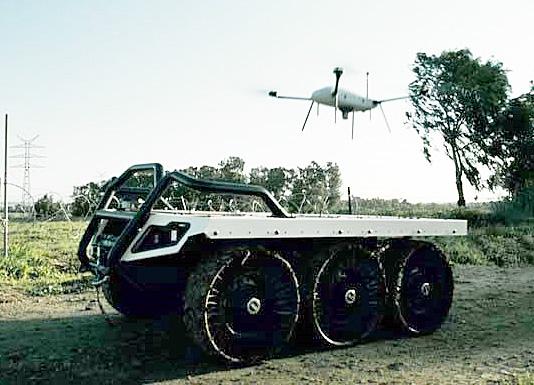Elbit Systems, Roboteam Launch New 6x6 Unmanned Ground Vehicle



Elbit Systems and Roboteam have announced ROOK, a multi-payload military 6x6 unmanned ground vehicle (UGV) that features a new design and built-in autonomy suite for higher capacity, improved maneuverability and on-field agility for greater mission effectiveness.
The ROOK UGV was developed based on operational experience accumulated from the 4x4 PROBOT UGV in several countries, including the U.S., France, Israel and the U.K. The vehicle was designed from scratch as a robotic UGV platform in compliance with applicable military standards, applying a modular structure that enables on-field component replacement without a need for a qualified technician, and efficient upgrades and modifications without needing the OEM. A built-in TORCH-X robotic and autonomous (RAS) application provides ROOK with full autonomy and the capability to navigate rough terrain, during day and night to deliver supplies, evacuate casualties, perform intelligence gathering missions (including the dispatch of an on-board VTOL drone), and operate as a remote weapon system.
Weighing 1,200 kg with a low center of gravity and 24 cm clearance, the ROOK can carry up to 1,200 kg of payloads while maintaining maneuverability and transferability, Elbit Systems said. The system is also fully compatible with the UGV Interoperability Profile (IOP), allowing users to seamlessly integrate other payloads.
With a modular hybrid energy configuration of batteries and an optional internal generator, ROOK has an endurance of up to eight drive hours, and a speed of 30 km/hour. The company said ROOK is operated either as a TORCH-X RAS application, or through an all-weather, 7-inch ruggedized display unit, enabling a single operator to control several unmanned systems. Additional details and video on the ROOK can be found here.
Our strategic partner, Robotics Data, offers a free downloadable report on the UGV market. Learn about the companies making unmanned ground vehicles for commercial and military markets. Our thanks to Keith Shaw for his assistance with this report.
